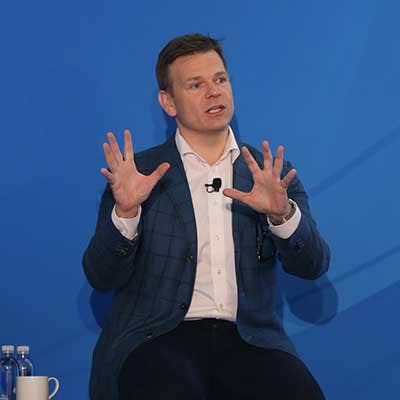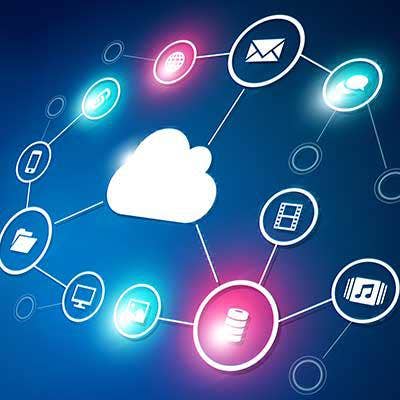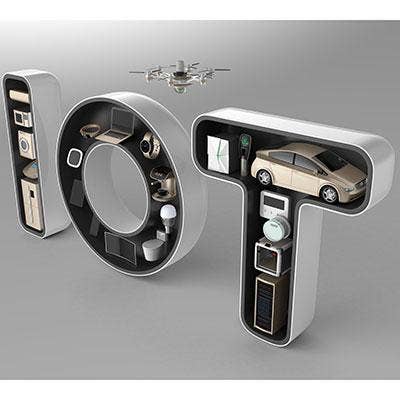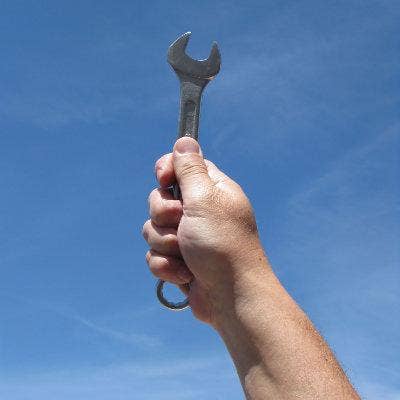Cisco SVP On IoT Sales Growth, Building Up An Operational Technology Channel And Leading The Industrial Market

Cisco's Internet of Things Push
Over the past year, Cisco has been polishing its Internet of Things offerings in an array of vertical markets – including the manufacturing, transportation and energy sectors.
Moving forward, the company will continue to focus on these segments by building out its channel strategy, both through its traditional IT solution providers, but also with a new channel specializing in operational technology.
Rowan Trollope, senior vice president and general manager of Cisco's IoT and applications businesses, told CRN that "things are changing very quickly" around the San Jose, Calif.-based company's Internet of Things strategy. Following are excerpts from CRN's conversation with Trollope about Cisco's channel strategy as it relates to the Internet of Things.

How has Cisco been building out its IoT strategy over the past half-year?
Things [have changed] very quickly over the last six months. We acquired Jasper and that business has continued to do very well. We have now figured out the full scope of the integration plan with Jasper and how that technology will become part of a future IoT platform that we will be announcing at some point in the near future. From a technology perspective, we've made some good progress.

What have you done on the IoT platform technology side for customers? Do you currently have products in proof of concept?
The big challenge in IoT, from Cisco's perspective, is the identification of a horizontal technology platform that is unique to IoT, [and it's] something everyone's been searching for. What's happened is that everyone looking at the IoT space realizes that almost all the opportunity appears to be vertical opportunities. And the challenge is that companies in the world are not vertically oriented.
We've been able to identify a horizontal technology platform that's going to apply to more than just one industry vertical. It's an extension and a new platform for us that's essentially built on the network. So that's new.
We have that technology set of products in around 10 early field trial and proof-of-concept customers where we're proving out the technology platform to make sure that it scales and that it's the right offer. It's essentially all about finding product fit for Cisco.

What is your channel strategy around IoT?
We've been continuing to build out our channel. We’ve already been selling quite a bit – hundreds and hundreds of millions of software and services to customers for specific IoT use cases, and we continue to do very well there. That business is everything from the industrial route switch line, to the Jasper technologies to some of the other technologies in our portfolios, like connected asset manager and our energy solutions. Those continue to grow and do very well. We've been growing our channel over the last six months around that.

How are you positioning your traditional IT solution provider channel to succeed in IoT?
We have a dual channel strategy – what we were pursuing before was the IT channel, which was leveraging our current partners and programs, and then helping them add the competencies that they needed to support the right line-of-business buyers we see in each industry. That also extends to supporting partner-to-partner strategies, so we find that we need to actually connect our partners together, between channel partners and ISVs, that are most relevant in each of these industries – so we've really been building a new ecosystem.

What do channel partners need to know for success in IoT?
[We want our channel to have] simple, simple, simple channel partner seller enablement content. The problem with IoT is that it tends to get way too complicated and overwhelming way too quickly. So we've been focusing on this extremely simple partner seller enablement content that helps them identify fundamental IoT opportunities across the industries where we're focused, and ultimately have the right LOB [line of business]. conversations.
For an example, our connected secure WAN solution is being sold into the transportation industry, and the conversation we're having is with transportation managers. The benefit that we sell is really about fuel cost reductions, they're seeing 10 [percent] to 30 percent of fuel cost and operational cost reductions just by introducing the connected bus solution. That's really our IT channel strategy.

Talk about your channel efforts on the operational technology side of IoT.
The other side of the coin of our channel strategy is the OT channel. When we acquired Jasper, we had thousands and thousands of OT buyers. Over 7,000 enterprises using our platform, and that's over double since we bought them. That's some good visibility on the buyer side. Now, on the OT channel side, we've actually made some progress – the partners we've had, it's really about leveraging the strategic relationship we've had with them, and on-boarding their channel. It's not about building a new channel as it is about linking to their existing channel. If you think about it, when we go visit factory shop floors, they already have relationships that go back decades with their partners. They really are their trusted technology partners, so they turn to those existing relationships and contacts, particularly in manufacturing and transportation. But what those partners are missing is the horizontal platform view of what could they do with this.
They're very very smart – Rockwell Automation is great, and a lot of the other folks we've worked with – what we've been doing initially is really helping them on the networking side, because the very first steps for anyone is connectivity. So we've been enabling those OT partners to arm them to address these opportunities just from a network convergence perspective. That's step one.

What tools and resources are you offering both IT and OT channel partners for IoT?
Really, it's about scaling that – we can do that from day one and never make any progress, so No. 2 is about programs. We have a partner guide, an industry quick selling guide, Cisco Ready for Industries – which is a dashboard that they can use to find adjacent opportunities within their current customers – we have an IoT partner specialization program for our partners to give them the foundational capabilities they need to have in order to go into manufacturing and other OT spaces. And then we have a series of webcasts we run every other week. We have an IoT career certification that takes operational professionals, like control engineers and network engineers, and trains them on what they need to know to build, manage and operate the manufacturing plant network. People are eating this stuff up.

What is your hope in having both an IT and OT channel to drive IoT sales?
We think of this as a three-legged stool. We've got our strength with the IT channel, we’ve got the partners' OT channels we're bringing together and scaling that through these programs. What all that is doing is opening up this world of opportunities in IoT. Every single customer is going through digital transformation, and the first door they're knocking on is Cisco. So our ability to pull together our channel partners along with the OT channel partners, and connect them together, is critical. And our area of focus is manufacturing, energy transportation and cities. That's where we're seeing the most traction and it's going really well.

Looking ahead, what are your future goals for Cisco's IoT strategy?
Going forward, our goals for the overall IoT strategy are really about ushering in this new era for our customers. If we focus on business outcomes that our partners want to get and we continue to do what we've been doing – identifying scalable technology solutions to common problems – we think that we can drive an outcome that has meaningful growth for the company. We're already seeing that happen. If you go back to driving the dialogue in IoT, we talked about trillions of dollars of opportunity. So when you see that ramp in scale, you'll see a big impact on Cisco's business. That's how I would measure it – are we helping customers see real business outcomes? And if we are, the natural consequence of that is Cisco making more money, and our partners making more profit. We're moving out of an era where the partner would drive the profitability through installation and configuration, and as the network and infrastructure becomes more automated, that is no longer a way for our partners to drive their profitability, they have to replace it with something. They are going to replace it by being engaged with the customer, focused on a business outcome and delivering these solutions to these new customers.